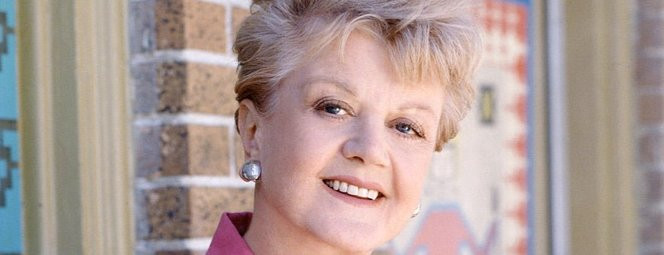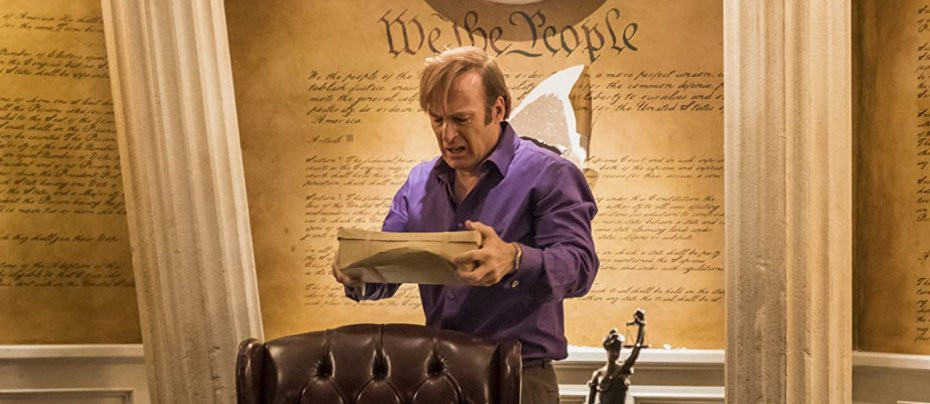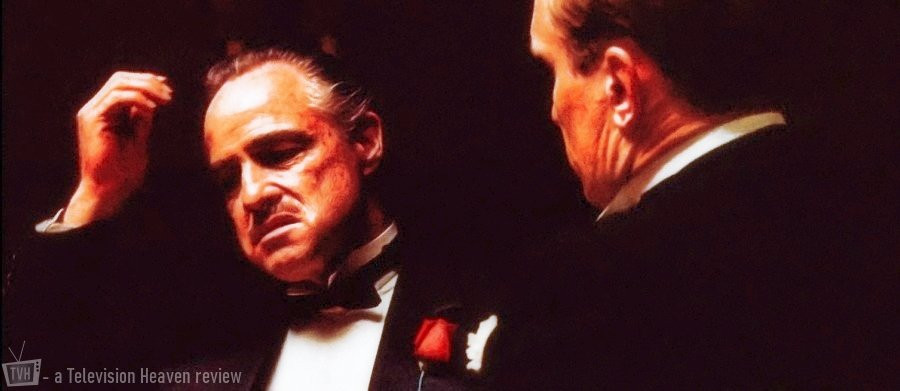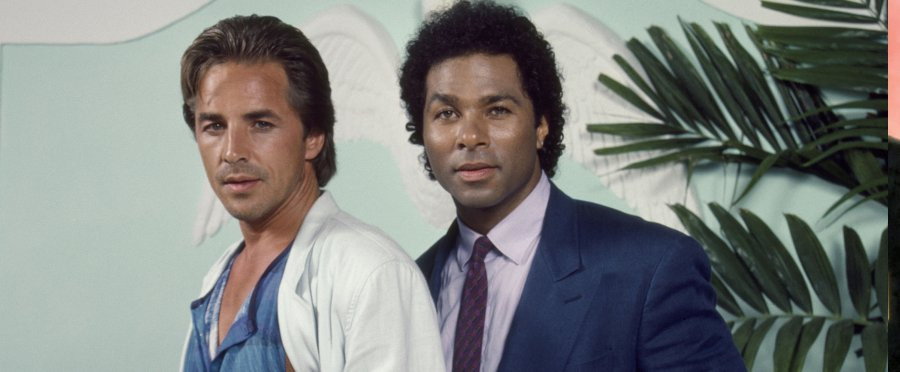
Murder, She Wrote
1984 - United StatesOwing more than a nod to Agatha Christie’s famed fictional character Miss Marple, Murder, She Wrote was a traditional mystery from the Universal Television factory that allowed the viewer to play along and guess the culprit. Its success as the longest-running mystery drama on American television also proved that shows starring older, vital women could draw large audiences.
Created by the team of Richard Levinson, William Link and Peter S. Fischer (Levinson and Link were responsible for the now-classic Columbo and Mannix), “Murder” centered on mystery writer Jessica Fletcher, a widow and former high school teacher who became a best-selling author but still lived in the quiet community of Cabot Cove, Maine. She didn’t drive and typed all her manuscripts on an ancient manual typewriter. But somehow, Jessica always found herself in the middle of a murder investigation. (There seemed to be an unusual number of homicides in Cabot Cove!)
The formula was always the same: A friend/relative of Jessica’s is accused of murder (viewers see the murder taking place but don’t see the killer); the police seem to be clueless. Jessica uses her fictional murder writing skills to do her own investigation and solve the murder mystery. Always in the last few minutes–just before the final commercial–Jessica explains the circumstances leading up to the killing and announces the identity of the culprit. Case closed, until next week.
Fortunately for CBS, Murder, She Wrote’s secret weapon was the considerable talents of Angela Lansbury. The Oscar-nominated and Tony winning actress and singer had never done a television series when she was approached to play the sleuth at the age of 58. (Former All In The Family star Jean Stapleton was originally considered for the role of Jessica; she turned it down with no regrets.) Lansbury’s ability to make Jessica Fletcher her own character helped give the show a considerable charm that viewers readily accepted. Airing after CBS’ very popular news magazine 60 Minutes on Sunday nights (starting in September 1984), Murder, She Wrote soared into the top ten immediately and gave the network a very strong anchor on the heaviest viewing night of the week.
At a time when the new-wave crime dramas such as Hill Street Blues and Miami Vice were attracting critical attention, “Murder” proved to be a good alternative for viewers–especially older ones–who wanted a more familiar format. And Lansbury refused to play a dottering old lady. She was seen as vital, active, interested in her world. Lansbury’s Jessica Fletcher paved the way for more active senior women on television (especially on the very successful sitcom The Golden Girls). It also sparked similar shows with older veteran actors, such as the Perry Mason television movie revival and the Andy Griffith legal drama Matlock.
Lansbury was the only constant star on Murder, She Wrote, but there were other regular characters. From 1984 to 1988, Tom Bosley–the former Howard Cunningham on Happy Days–played Cabot Cove Sheriff Amos Tupper. (Bosley later left to star in his own show, The Father Dowling Mysteries; he was replaced by Ron Masak as Sheriff Mort Metzger.) William Windom was the town doctor, Doctor Seth Hazlitt, while Michael Horton played her accountant nephew Grady Fletcher. And of course, the show utilized plenty of guest stars, from veteran television and film actors, to up-and-coming talents–a list far too long to note here.
There was an unusual spin-off series from “Murder”: Veteran Broadway and film actor Jerry Orbach appeared several times as private detective Harry McGraw; CBS gave him his own series in September 1987 called The Law and Harry McGraw; it ran through February 1988. Orbach would later find greater television fame as another detective–Lenny Briscoe–on Law & Order before his untimely death in 2005.
After five years as Jessica Fletcher, Lansbury threatened to leave the show after the 1988-89 season. CBS, not wanting to lose one of its biggest hits, allowed Lansbury to cut back on her schedule; there were episodes where she only appeared at the beginning and end, having other guest sleuths handle the show that week. Eventually, Lansbury returned to the show in full force.
Starting in the fall of 1991, a trimmer and more youthful-looking Jessica moved to New York City where she began teaching a criminology course at Manhattan University–and not surprisingly, murder seemed to follow the still spry writer wherever she went. Behind the scenes, things were running smoothly; Lansbury’s husband and sons helped produce the show and did other projects for her production company, including several television movies that featured the actress in varied roles, including Santa’s wife in Mrs. Claus and a widow seeking adventure in Mrs. Harris Goes To Paris. (She also continued work in theatrical films; her voice in the tremendously successful Disney animated feature Beauty and the Beast endeared Lansbury to a young generation of fans who were unlikely to be watching Murder, She Wrote with their parents.)
And that was the main problem with “Murder,” as critics liked to point out. Its slow pacing, predictable format and over 60-year-old star meant the show’s core audience was older than most television series. Even though “Murder” was still a top ten hit for much of its run, CBS could not charge the same amount for advertising that other series with similar ratings but younger audiences were getting. One example was its direct competition on ABC, Lois & Clark. In 1994, the Superman-based series had a smaller audience but was able to charge more for advertising than “Murder” because its audience was the “friendly” demographic of 18 to 49 year olds–the ones more likely to try a new product or consider a different car than older people.
During the 1994-95 season, CBS fell to third place in prime time as a resurgent NBC and upstart Fox gained ground with hip, younger-skewing shows. CBS–which had the oldest audience of the major networks--hastily introduced new shows it hoped could attract the same lucrative audiences NBC and Fox were attracting. Unfortunately, Murder, She Wrote became a victim of the short-lived strategy.
In a classic case of “if it ain’t broke, fix it,” CBS moved the show from its comfortable Sunday night time slot to Thursdays at 8:00 PM–putting it squarely against NBC’s sophomore sitcom smash Friends. The move angered Lansbury, who told “TV Guide” in the fall of 1995: "CBS has made it abundantly clear that they no longer want anything to do with my demographic....People are not as patient about their entertainment as they once were. They want a result, or a violent climax and instant gratification, and if they don't get it, they're gone." That’s what happened with “Murder”. The Central Perk gang easily crushed the matronly sleuth in the ratings. In a wry dig at “Murder’s” NBC competition, one episode that season had Jessica investigate the murder of a twenty-something actor on a popular comedy about six twenty-somethings. The episode’s ironic title: “Murder Among Friends”.
CBS did move the show back to its old Sunday timeslot in midseason, but the damage was done as network executives decided twelve years was enough for Murder, She Wrote. The final hour-long episode, which aired May 19th, 1996, was called “Death By Demographics”. Jessica probed a murder in a San Francisco radio station that was changing formats to attract younger listeners. It was an appropriate coda to a series criticized for its older audience.
Even though “Murder” was no longer a weekly series, CBS aired five television movies featuring Lansbury’s character in two-hour stories; the last of the expanded “Murders” was shown in 2003. Angela Lansbury was better-known as a Oscar-nominated and Tony-winning actress before accepting the Murder, She Wrote episode. But her importance to the television industry can not be understated. “Murder” may not have been everybody’s cup of tea, but it was Lansbury’s talent and instinct that made it one of the most successful dramatic series of the 1980's and 90's. A pretty good legacy, by any measure.
Seen this show? How do you rate it?
Seen this show? How do you rate it?
Published on January 9th, 2019. Written by Mike Spadoni (2005) for Television Heaven.










